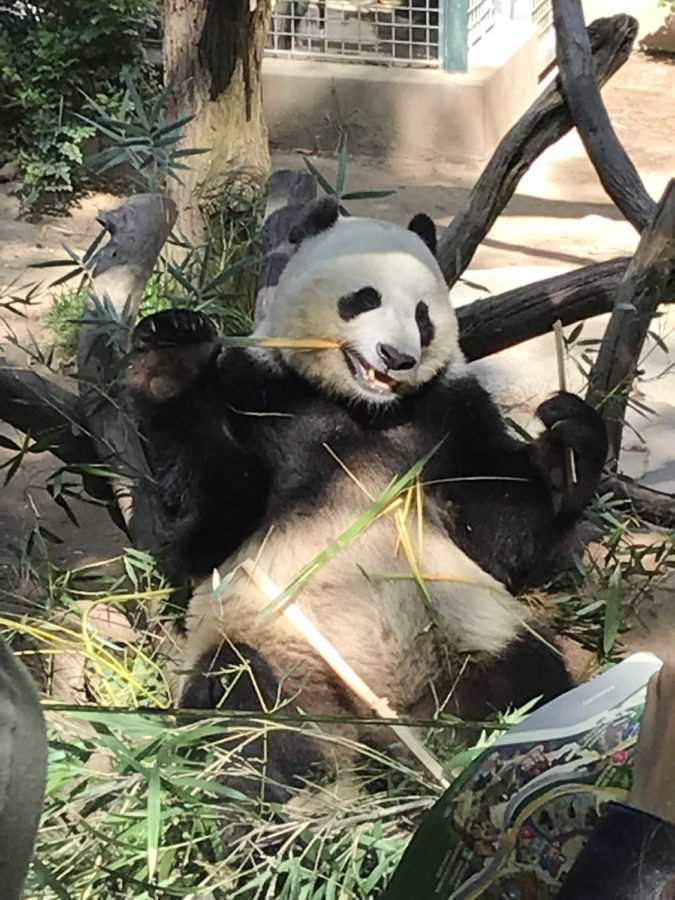San Diego Zoo Pandas Head Back To China
June 6, 2019
The Giant pandas left the San Diego Zoo on April 29, headed back to China, in accordance with the contract made with the Chinese Government.
According to the Los Angeles Times, pandas first came to the San Diego Zoo in 1987 for a two-hundred-day visit and brought with them two million visitors (latimes.com). The pandas came again in 1996, according to the San Diego Union-Tribune. Bai Yun came over with another panda named Shi Shi. Bai Yun gave birth to many cubs including Xiao Liwu, the panda that resided at the San Diego Zoo with Bai Yun (sandiegouniontribune.com).
Also according to the Los Angeles Times, Bai Yun and Shi Shi came from the Wolong Nature Reserve in China, and were only supposed to stay 12 years, but Bai Yun stayed an additional 13 years (latimes.com).
The main reason why Bai Yun and Xiao Liwu were able to stay at the San Diego Zoo longer than first planned is because of Bai Yun’s success at breeding and the zoo’s work conducting panda research to help young cubs survive when they are born into captivity (sandiegouniontribune.com). The panda conservation program at the San Diego Zoo in particular has been very successful. It has produced six cubs and developed techniques to help keep young pandas alive that are now used around the world (latimes.com).
When the pandas were brought to the United States in 1996, the survival rate for cubs born into captivity was between ten and twenty percent. It is now up to ninety-five percent, and a big reason why is because of the work put in by the San Diego Zoo. For example, a San Diego Zoo nutritionist invented a milk formula for panda cubs that is now used all over the world (sandiegouniontribune.com).
According to San Diego Zoo Global, when the zoo started working with pandas, the species were on the verge of extinction. Thanks to work by San Diego Zoo, they “…helped scientists learn a great deal about panda behavior, pregnancy, births, and maternal and geriatric care.” Now the wild population in China includes nearly 2,000 individuals (sandiegozooglobal.org).
“The intent was to prevent the extinction of the species. This program can be looked at as one of a handful of programs that have actually prevented the extension of a key species,” said Director Carmi Penny, director of husbandry sciences at the zoo, according to the San Diego Union-Tribune (sandiegouniontribune.com).
Before they left, Director Dwight Scott said, to San Diego Zoo Global, “The joy the pandas instill in people is on full display at the Zoo on any given day. We understand that pandas are beloved around the world, including by our staff, volunteers and millions of annual guests” (sandiegozooglobal.org).
Many UC High students were sad about the pandas’ departure. Sophomore Rafer Shaughnessy said, “I liked the pandas, and it’s a shame that they are leaving since they are practically the zoo’s mascot.”
UC High Junior Hope Denison said, “I loved going to the zoo to see the pandas. I think it’s sad that they left. They brought something different to our city.”
“It’s sad to see the pandas go but hopefully they will return someday in the future,” said Senior Kimmi Weiss.
Zoo visitors can show their appreciation for the pandas by purchasing a commemorative bell or hanging a free tag on the Giant Panda Friendship wall in Panda Canyon at the San Diego Zoo. “Funds from bell purchases will go towards San Diego Zoo Global’s continued panda conservation program” (sandiegozooglobal.org).


